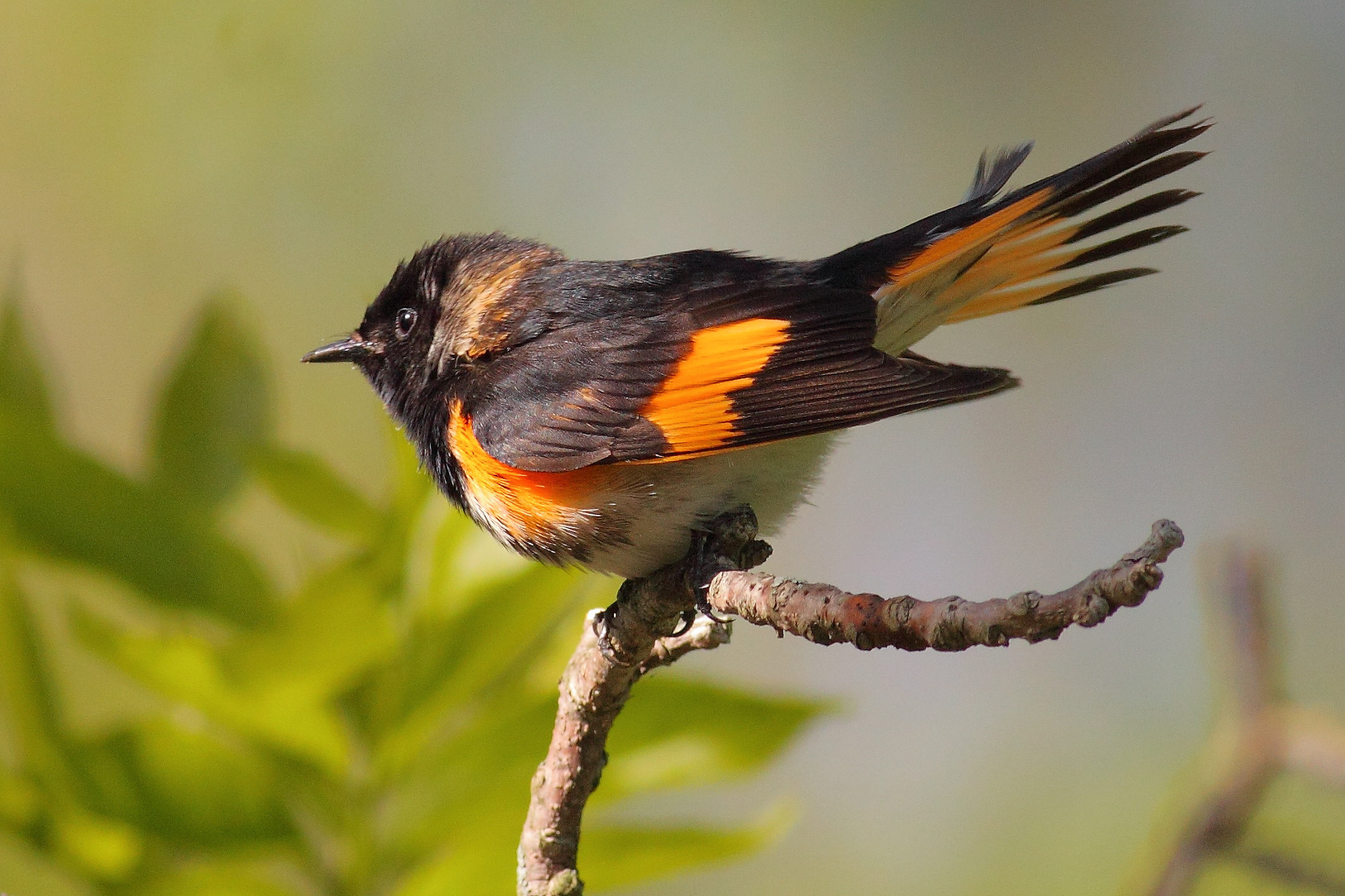During the spring and summer seasons in Pennsylvania, when the warblers make their appearance, yellow birds become a common sight, with the American Goldfinch being the only regularly spotted yellow bird during the winter months.
To assist you in identifying the yellow birds you spot in Pennsylvania, this comprehensive guide provides pictures, identification details, song recordings, and migration patterns.
The majority of yellow birds found in Pennsylvania belong to the warbler, oriole, or tanager families, and sometimes the female birds look quite different from their male counterparts.
With the wealth of information provided in this guide, identifying yellow birds becomes a much simpler task. The list of yellow birds is arranged in order of their common sightings in Pennsylvania during spring and summer, based on ebird checklists from May and June.
Yellow birds found in Pennsylvania throughout the year include the American Goldfinch.
Yellow birds found in Pennsylvania during the summer months include the Common Yellowthroat, Cedar Waxwing, Baltimore Oriole, Yellow Warbler, Yellow-rumped Warbler, American Redstart, Scarlet Tanager, Black-throated Green Warbler, Magnolia Warbler, Hooded Warbler, Eastern Meadowlark, Orchard Oriole, Pine Warbler, Yellow-throated Vireo, Blue-winged Warbler, White-eyed Vireo, Prairie Warbler, Canada Warbler, Yellow-throated Warbler, Prothonotary Warbler, Dickcissel, and Summer Tanager.
Yellow birds found in Pennsylvania during migration periods include the Palm Warbler, Nashville Warbler, Cape May Warbler, Wilson’s Warbler, Evening Grosbeak, and Orange-crowned Warbler.
Continue reading to gain the knowledge necessary for identifying the yellow birds you have spotted.
Pennsylvania is home to a total of 29 yellow bird species:
1. American Goldfinch

To identify the American Goldfinch, observe its bright yellow and black plumage, with the males displaying vibrant coloring during the spring. In contrast, the females and males in winter exhibit duller brown hues.
These goldfinches can be found throughout most of North America, residing in weedy fields, overgrown areas, suburbs, parks, and even backyards. Their diet mainly consists of sunflower, thistle, and aster plants.
You can attract them to your backyard by planting thistles and milkweed or by providing sunflower and nyjer seeds in your bird feeders.
2. Common Yellowthroat

During the breeding season, the Common Yellowthroat can be found in Pennsylvania, recognizable by its brownish back and bright yellow underparts. Male individuals sport black masks on their faces, which serve as a distinguishing feature.
These small songbirds reside in marshy or wetland areas, as well as brushy fields, foraging for insects. They construct their nests near the ground in marshy environments, using grass and sedges.
Their diet consists of insects such as beetles, crickets, grasshoppers, spiders, and snails. Creating large backyards with dense vegetation and native plants can attract Common Yellowthroats.
3. Cedar Waxwing

The Cedar Waxwing can be observed in Pennsylvania throughout the year, with higher sightings from May to November. These elegant social birds feature pale brown heads, chests, and crests, fading to gray on their backs, wings, and tails.
Their bellies are pale yellow, and their eyes are adorned with a narrow black mask and bright red wingtips. Cedar Waxwings breed in Canada before migrating to southern US states for the winter.
They can be found in berry bushes, woodlands, grasslands, towns, and along streams. Their diet mainly consists of fruit, but they also consume insects during the summer.
Planting native trees and shrubs with small fruit varieties can attract Cedar Waxwings to your backyard.
4. Baltimore Oriole (Female)
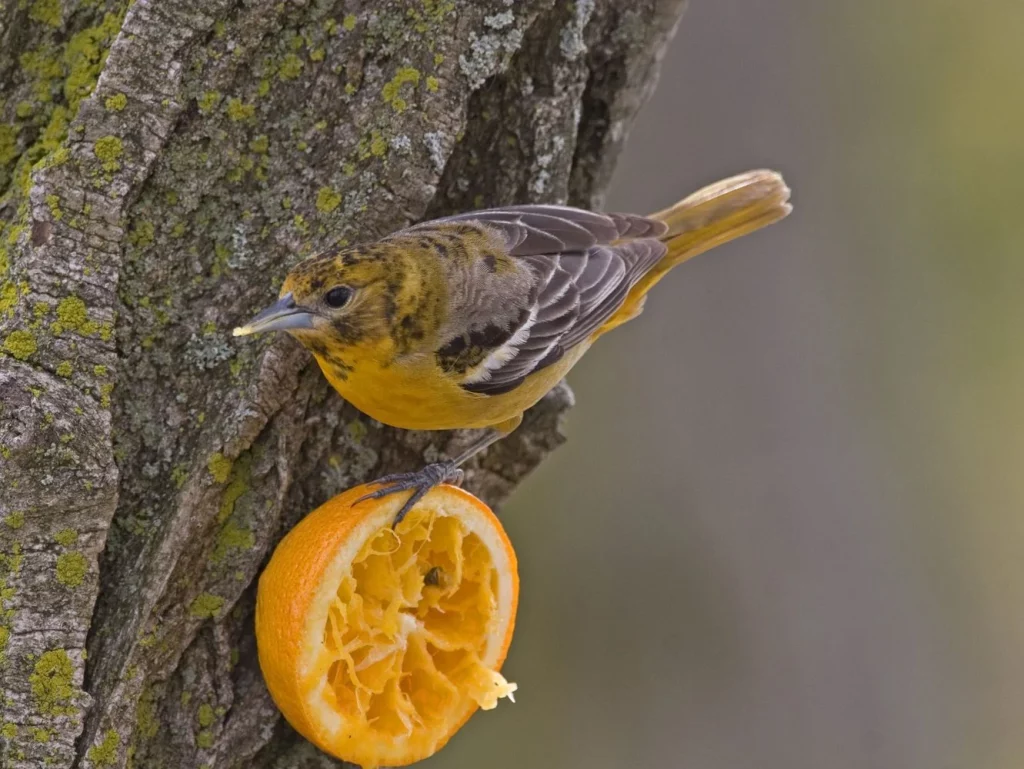
The Baltimore Oriole is a colorful springtime sight in the eastern part of North America. Male individuals feature bright orange and black plumage, with white wing bars on their black wings.
Female birds display a yellowish coloration on their undersides and heads, along with grayish-brown wings and backs. Baltimore Orioles breed in eastern and central US states, including parts of Canada, before migrating to Florida, Central America, and the Caribbean for the winter.
These orioles primarily inhabit open woodlands, riverbanks, forest edges, and even parks and backyards. They feed on insects such as beetles, crickets, grasshoppers, spiders, and snails, as well as various fruits.
Attracting Baltimore Orioles can be achieved by offering oranges or sugar water in feeders, along with planting fruiting and nectar plants.
5. Yellow Warbler
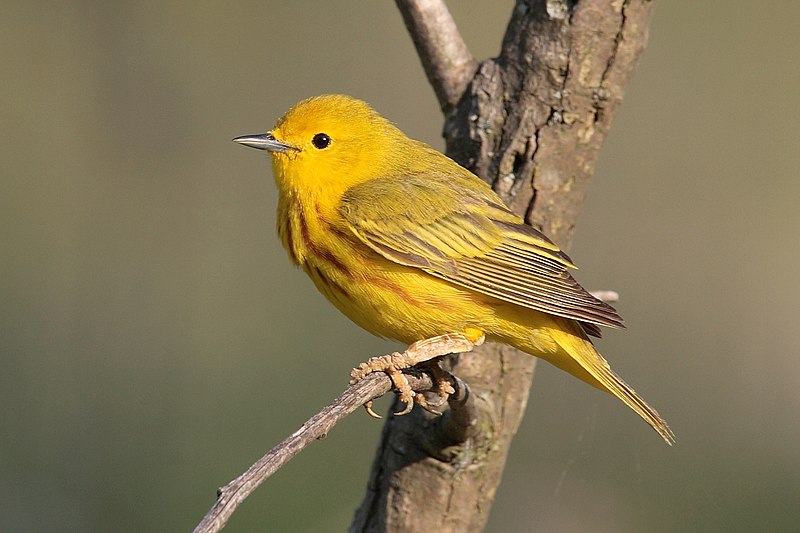
Yellow Warblers make their presence known during the breeding season in Pennsylvania, arriving in April and beginning their migration in October. These small, bright yellow birds possess a yellow-green back, with males showcasing chestnut streaks on their breasts.
Females and juveniles exhibit less brightness compared to males. Yellow Warblers breed in Canada and the US (excluding southeastern states) before heading back to Central and South America for the winter.
Along streams, wetlands, thickets, and field edges, you may find them foraging for insects like caterpillars, midges, beetles, bugs, and wasps. To attract Yellow Warblers to your backyard, provide suet, oranges, peanut butter, and plants with berries.
Native plants that attract insects without the use of pesticides, along with birdbaths near secluded plantings, can also entice them.
6. Yellow-rumped Warbler
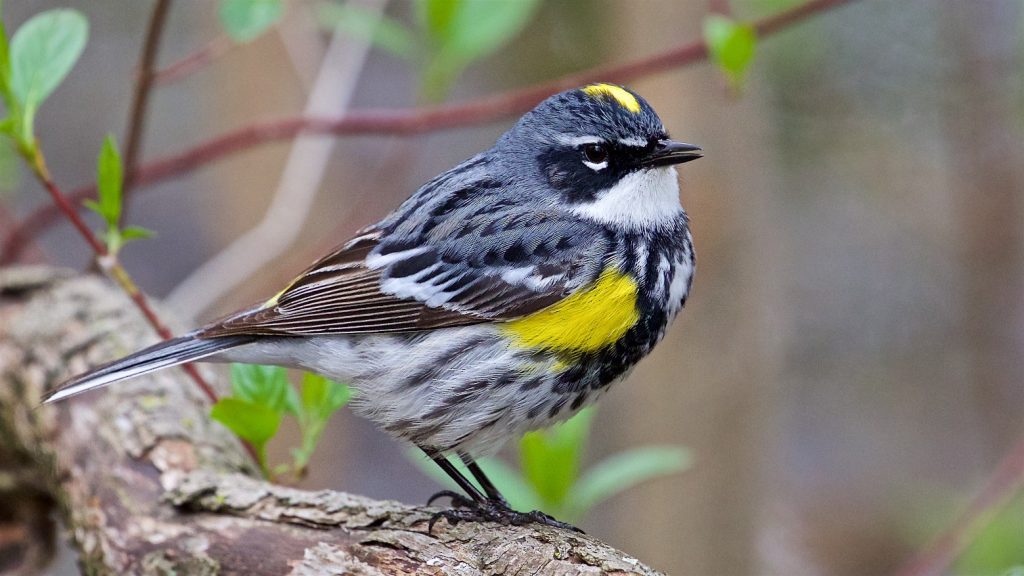
The Yellow-rumped Warbler can be spotted during the breeding season in northern Pennsylvania, but its numbers increase during migrations in April-May and October-November. Some individuals remain in the southern regions of the state during winter.
These warblers possess gray plumage with flashes of yellow on the face, sides, and rump, and white wings. Females may appear slightly brown, while winter birds exhibit paler brown hues with bright yellow rumps and sides that transition back to yellow and gray during spring.
Yellow-rumped Warblers primarily breed in Canada, the Rockies, and the Appalachian Mountains. During migration, they can be observed in the Midwest before overwintering in southern and southwestern US states, the Pacific Coast, Mexico, and Central America.
Their habitats include coniferous forests during the breeding season and open areas with fruiting shrubs during winter. They primarily feed on insects in summer and switch to a fruit-based diet in winter, including bayberry and wax myrtle.
Recognizable by their characteristic song, you can attract Yellow-rumped Warblers by offering sunflower seeds, suet, raisins, and peanut butter.
7. American Redstart (Female)
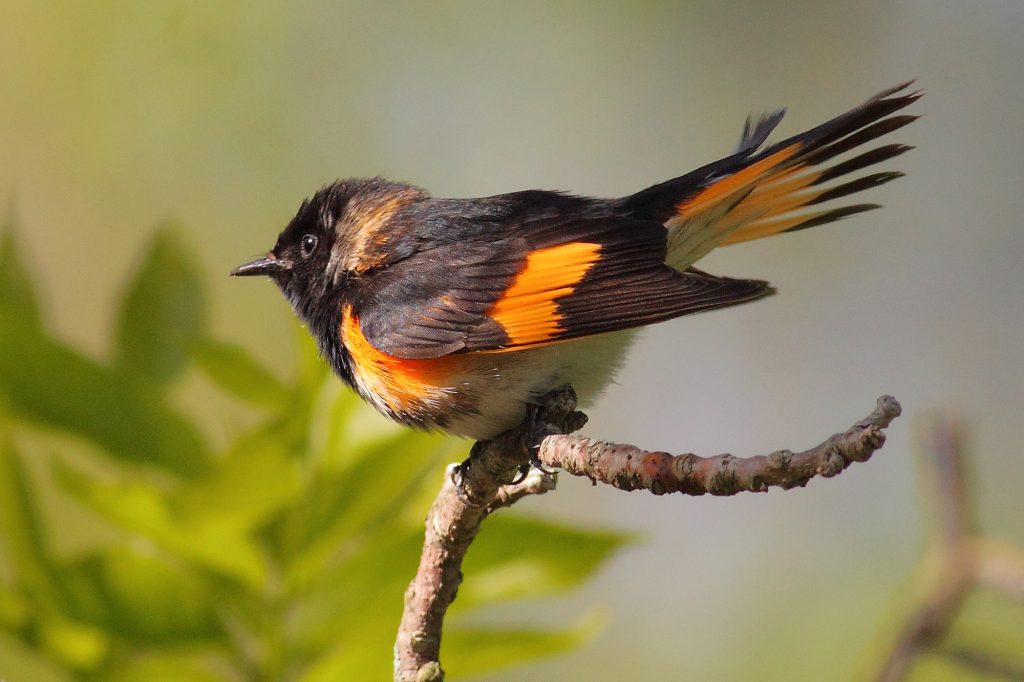
American Redstarts spend the breeding season in Pennsylvania, arriving in March and starting their migration in October. Male American Redstarts exhibit predominantly black plumage with bright orange patches and a white belly.
Females, on the other hand, feature olive-gray coloration instead of black and display numerous yellow patches. American Redstarts breed in eastern US states and Canada, with sightings during migration in central and western US states.
They can be found in deciduous woodlands, backyards, and thickets, foraging for insects and berries like serviceberries and magnolias. Creating suitable habitats with native shrubs and plants that attract insects can attract American Redstarts. They have a unique song that drops in pitch towards the end.
8. Scarlet Tanager (Female)

Scarlet Tanagers grace Pennsylvania during the summer, from May to mid-October, and are recorded in 14% of checklists at this time. Male Scarlet Tanagers sport bright red plumage with black wings and tails, along with thick bills and short tails.
Females exhibit different coloring, featuring more muted hues with yellowish undersides. Scarlet Tanagers breed in eastern US forests before migrating to western South America.
They can be spotted during migration in southeastern US states. These tanagers primarily inhabit forest canopies, where they search for insects. They create nests by weaving twigs, grass, and plant material together.
You can attract Scarlet Tanagers by planting berry-producing plants such as blackberries, raspberries, huckleberries, juneberries, serviceberries, mulberries, strawberries, and chokeberries.
9. Black-throated Green Warbler
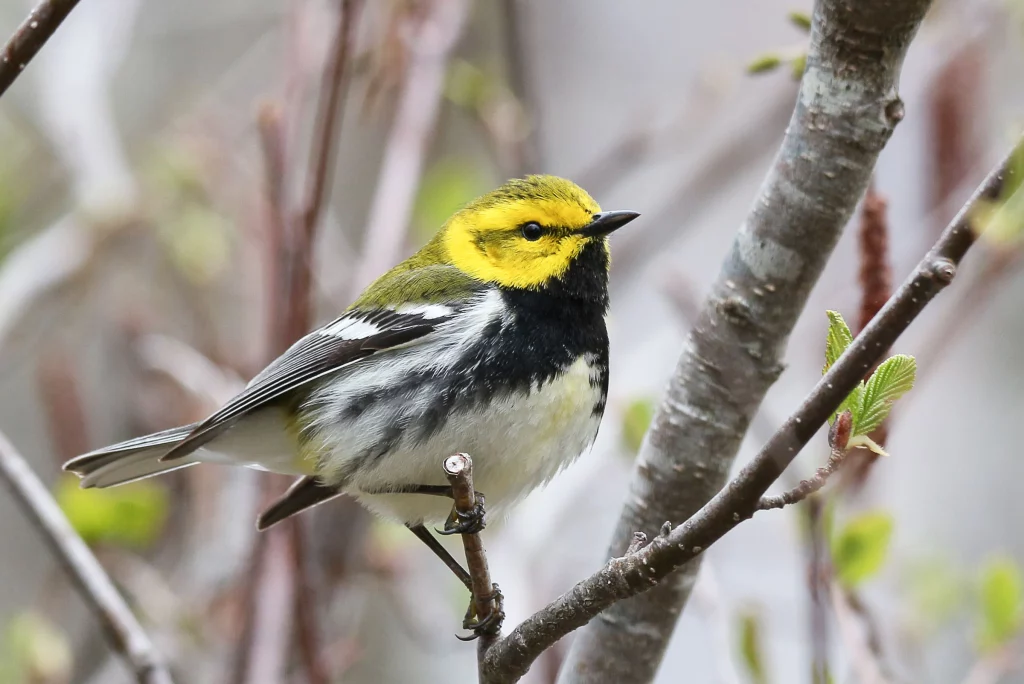
Black-throated Green Warblers make appearances in Pennsylvania from April to October, with a few individuals lingering until December. They are recorded in 8% of summer checklists.
These warblers are characterized by their small size, bright yellow faces, olive-yellow backs, and black streaks on their sides and wings. Males possess large black patches on their throats, while females and juveniles have smaller patches.
Black-throated Green Warblers primarily breed in Canada and parts of the Rockies and the Appalachian Mountains. They can be observed during migration in the eastern US, while they spend winters in Mexico, northern South America, and the Caribbean.
These warblers inhabit high branches of forests, foraging on insects. They construct nests in small trees or shrubs, weaving twigs, pine needles, and grass together with spider webs.
Attracting Black-throated Green Warblers can be achieved by providing mature trees.
10. Magnolia Warbler

Magnolia Warblers can be found in Pennsylvania during summer, from mid-April to November. They are most common during migration in May and September, appearing in up to 17% of checklists during these times.
Male Magnolia Warblers exhibit black backs and yellow undersides, with black streaking forming a “necklace” on their necks and bellies. Females, in contrast, appear grayer on their backs and lack the distinctive streaking on their bellies.
Magnolia Warblers predominantly breed across Canada and northeastern US states. During migration, they can be spotted in the eastern US, while their winter grounds are in Central America and the Caribbean.
These warblers tend to stay on low branches in forests or parks during migration, feasting on insects. They construct nests from twigs, bark, pine needles, grass, and other materials, lining them with feathers and animal hair.
To attract Magnolia Warblers, provide native shrubs and trees for resting during migration.
11. Palm Warbler
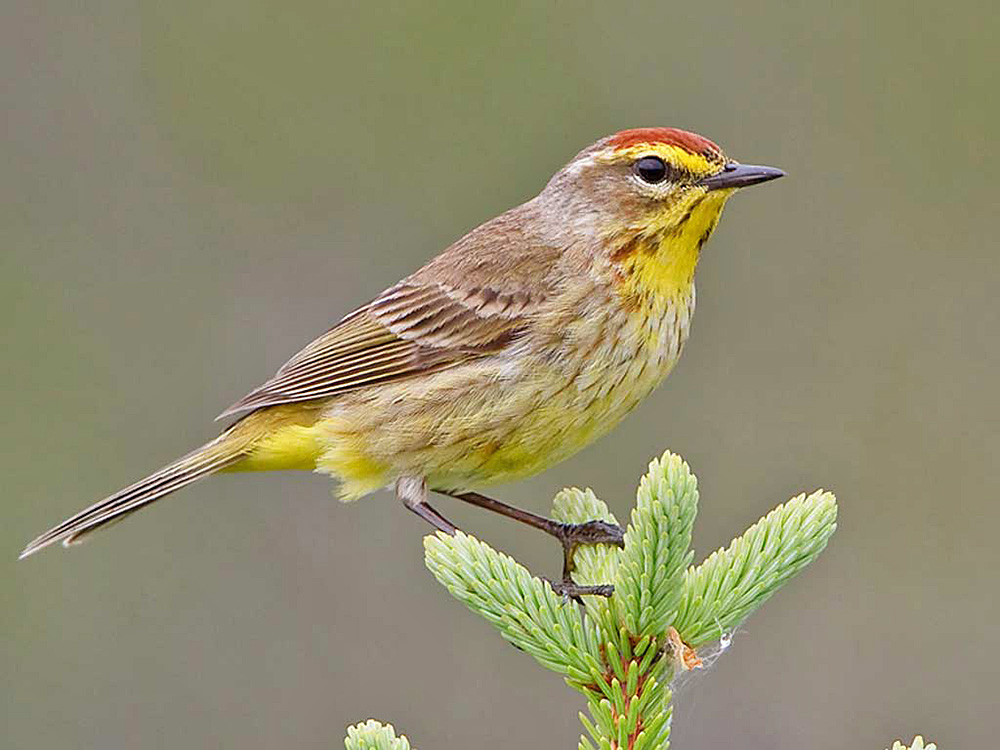
Palm Warblers are mainly observed during migration in Pennsylvania and are recorded in up to 10% of checklists during these periods. They feature rusty red patches on the tops of their heads and olive-brown coloration throughout their bodies.
Palm Warblers breed predominantly in Canada and can be seen during migration in eastern US states. Some individuals spend winters in Florida, along the southeastern coast, and other southern regions.
These warblers can be found in weedy fields, forest edges, and scrubby areas during spring and fall migrations. They often forage on the ground, alongside other birds like sparrows, juncos, and yellow-rumped warblers, searching for insects.
Attracting Palm Warblers can be accomplished by planting native plants that attract insects and providing bayberry or hawthorn berries.
12. Hooded Warbler

Hooded Warblers spend their summers in Pennsylvania, from April to October, and are recorded in 6% of summer checklists. Male Hooded Warblers exhibit striking black hoods and bright yellow faces, throats, and underparts.
Females feature olive-green backs, yellow underparts, and a yellow face with a gray hood. Hooded Warblers breed in eastern US states and the southeastern region of Canada.
They can be found in forest understories, along streams, and in swamps, foraging for insects. These warblers build nests in shrubs or saplings near the ground, weaving plant material together.
Creating suitable habitats with dense understory vegetation and native plants can attract Hooded Warblers.
13. Eastern Meadowlark
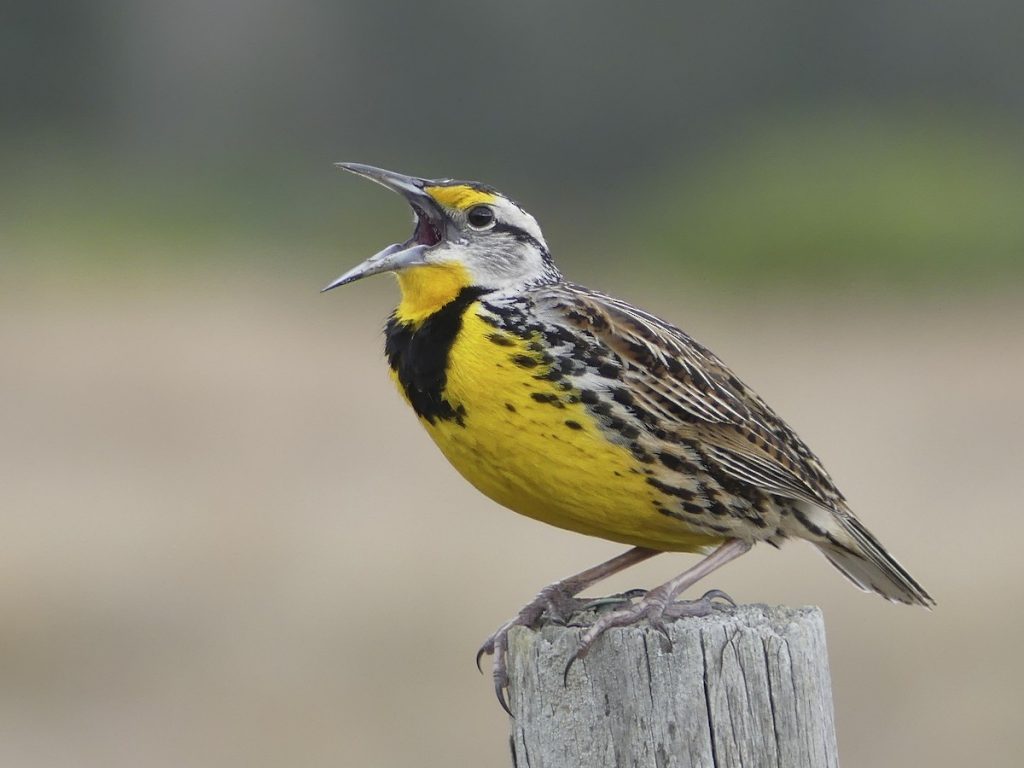
Eastern Meadowlarks are primarily seen in Pennsylvania from April to October, with sightings recorded in up to 13% of checklists during the summer. These medium-sized birds feature yellow underparts, brown streaking on their backs, and a black “V” on their chests. They possess a long, sharp bill and distinctive songs.
Eastern Meadowlarks breed across most of North America, excluding the northernmost regions, and they reside in open grasslands, meadows, pastures, and fields. They feed on insects, spiders, and earthworms, but also consume seeds and fruits. Eastern Meadowlarks construct their nests on the ground, hidden among vegetation.
To attract Eastern Meadowlarks, provide open grassy areas with a mix of taller and shorter grasses, avoiding pesticide use.
14. Orchard Oriole (Female)
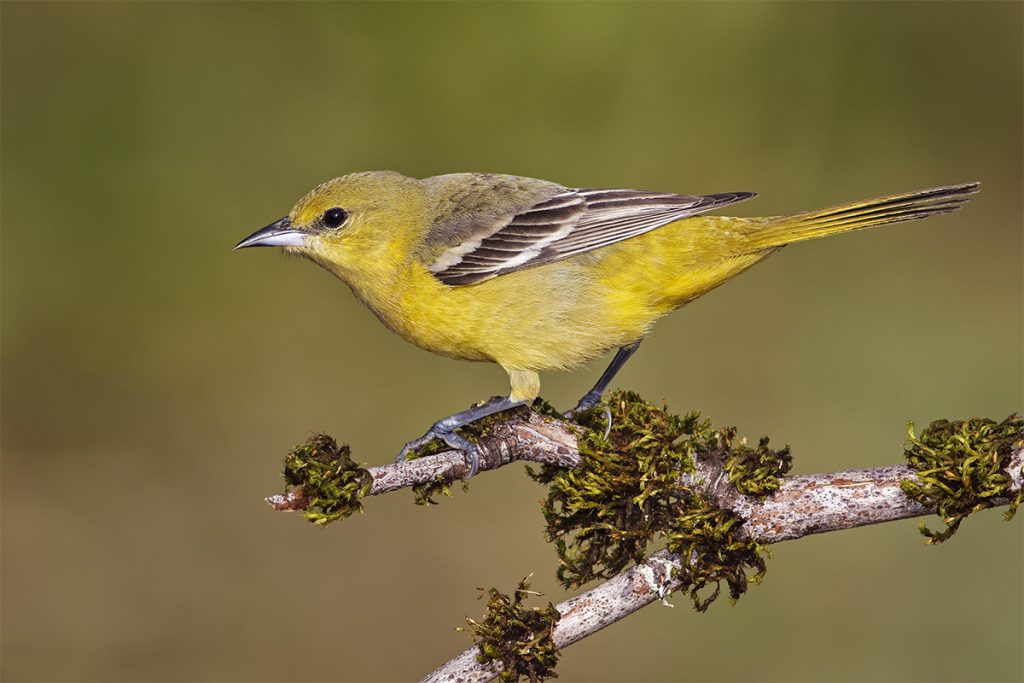
Orchard Orioles can be seen in Pennsylvania from May to September, with sightings recorded in up to 9% of checklists during the summer. Male Orchard Orioles exhibit bright orange plumage with black wings and tails, while females possess a greenish-yellow coloration on their undersides and heads, along with grayish-brown wings and backs.
Orchard Orioles breed across eastern and central US states and parts of Canada before migrating to Central America for the winter. They can be found in orchards, woodlands, forest edges, and backyards. These orioles primarily feed on insects and spiders, but also consume nectar and fruit.
Attracting Orchard Orioles can be achieved by offering oranges or sugar water in feeders and planting fruiting and nectar plants.
15. Pine Warbler
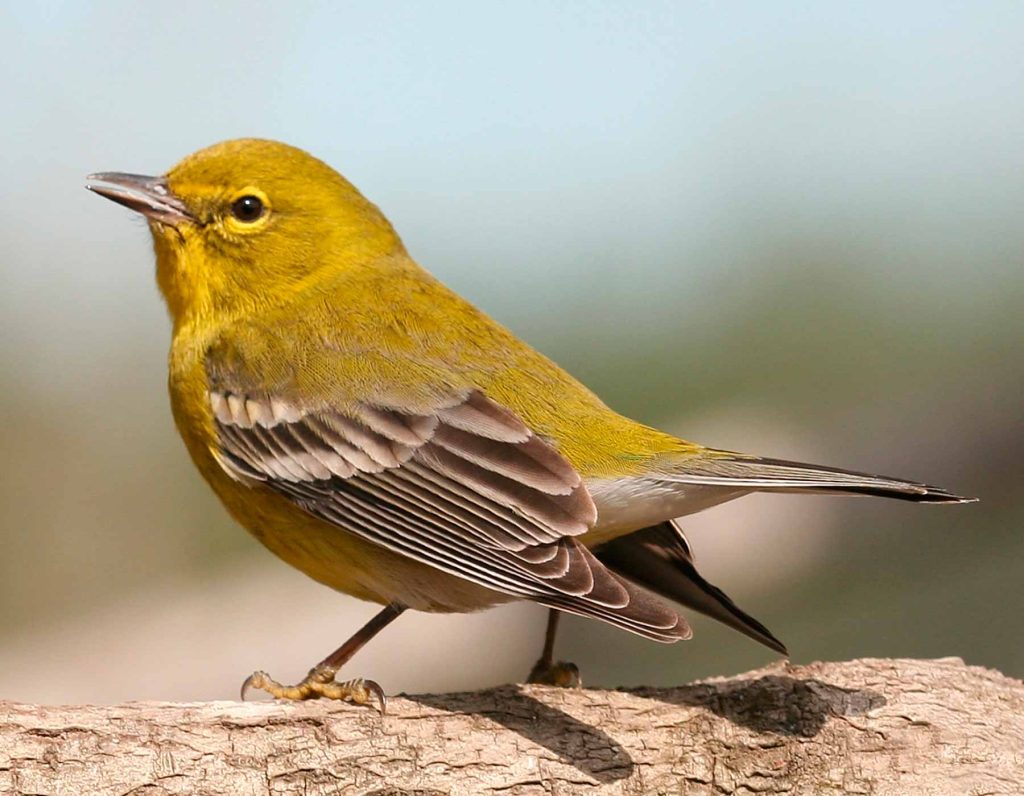
Pine Warblers are mostly observed in Pennsylvania from April to October, with a higher abundance in May and September. They are recorded in up to 11% of summer checklists. These warblers possess yellow underparts and olive-green upperparts, with streaking on their chests and wings.
Pine Warblers breed across northeastern US states and parts of Canada, while they can be spotted during migration in southeastern US states. These warblers inhabit pine forests, forest edges, and mixed woodlands, foraging for insects such as beetles, ants, caterpillars, and spiders.
They construct nests in pine trees, using bark strips, twigs, grass, and pine needles. To attract Pine Warblers, provide a mix of conifers and deciduous trees, along with native plants that attract insects.
16. Yellow-throated Vireo

Yellow-throated Vireos make appearances in Pennsylvania from May to September, with sightings recorded in up to 6% of summer checklists. These medium-sized birds possess olive-green upperparts, white underparts, and bright yellow throats.
They also exhibit white wing bars. Yellow-throated Vireos breed in eastern US states and parts of Canada, residing in deciduous forests, especially near rivers and swamps. They feed on insects, caterpillars, and spiders.
These vireos construct cup-shaped nests suspended from forked branches, using plant fibers, grass, moss, and spider silk. To attract Yellow-throated Vireos, provide large trees and shrubs, along with water sources such as birdbaths or shallow pools.
17. Blue-winged Warbler
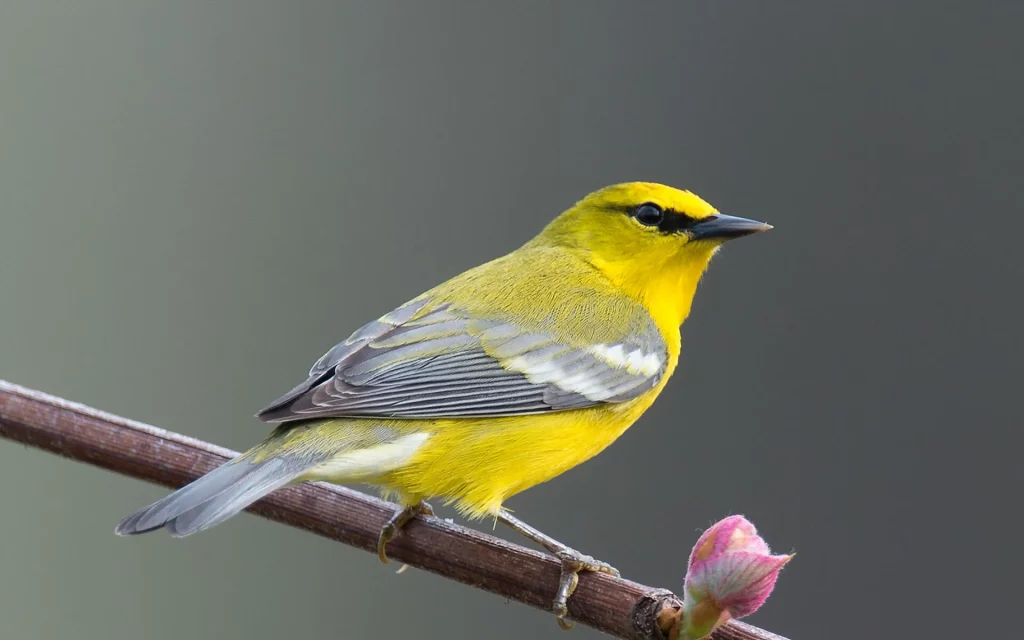
Blue-winged Warblers can be observed in Pennsylvania during the breeding season from April to August. They are recorded in up to 7% of summer checklists.
These small warblers have bright yellow underparts, bluish-gray wings, and a white wing patch. Blue-winged Warblers breed in eastern and central US states and parts of Canada before migrating to Central America for the winter.
They can be found in open woodlands, shrubby areas, and young forests. These warblers primarily feed on insects and spiders.
Attracting Blue-winged Warblers can be achieved by providing suitable habitat with a mix of open areas and dense vegetation.
18. White-eyed Vireo
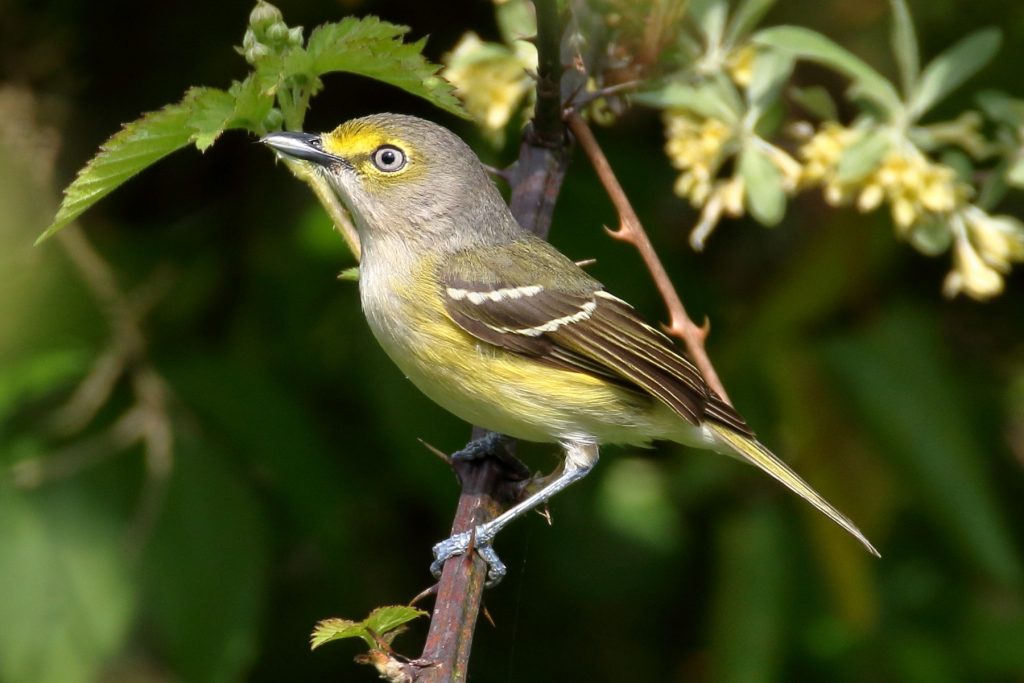
White-eyed Vireos are spotted in Pennsylvania during the breeding season from May to September, with sightings recorded in up to 5% of summer checklists. These small songbirds have yellow underparts, olive-green upperparts, and distinctive white eyes.
White-eyed Vireos breed in southeastern US states and parts of the Midwest before migrating to Mexico and Central America for the winter. They inhabit shrubby areas, thickets, and woodland edges.
These vireos primarily feed on insects, spiders, and small fruits. To attract White-eyed Vireos, provide dense shrubs and thick vegetation, along with a water source such as a birdbath.
19. Prairie Warbler
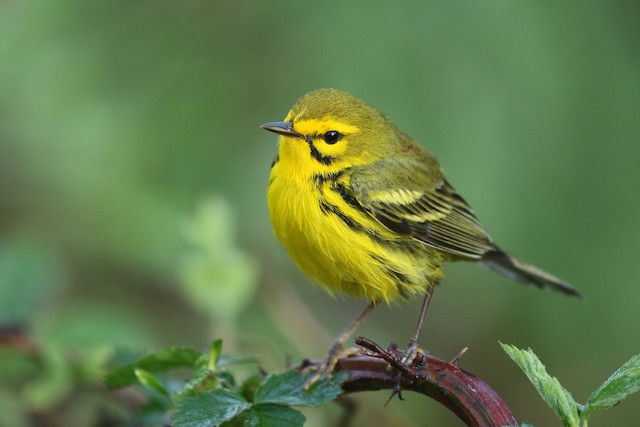
Prairie Warblers can be observed in Pennsylvania during the breeding season from May to September, with sightings recorded in up to 6% of summer checklists. These small, vibrant warblers have bright yellow underparts, olive-green upperparts, and bold black streaks on their sides and across their breasts.
Prairie Warblers breed in eastern and central US states before migrating to the Caribbean and Central America for the winter. They prefer open scrubby areas, grasslands, and young forests. These warblers primarily feed on insects, including beetles, caterpillars, and spiders.
To attract Prairie Warblers, create open habitat with shrubby areas and provide a water source.
20. Canada Warbler

Canada Warblers can be spotted in Pennsylvania during the breeding season from May to September, with sightings recorded in up to 6% of summer checklists. These medium-sized warblers have gray upperparts, bright yellow underparts, and a distinctive necklace-like pattern of black streaks on their breasts.
Canada Warblers breed in northeastern US states and parts of Canada before migrating to northern South America for the winter. They inhabit dense forests, especially near streams and wet areas.
These warblers primarily feed on insects, including flies, beetles, and caterpillars. To attract Canada Warblers, provide dense understory vegetation and maintain a healthy insect population.
21. Yellow-throated Warbler
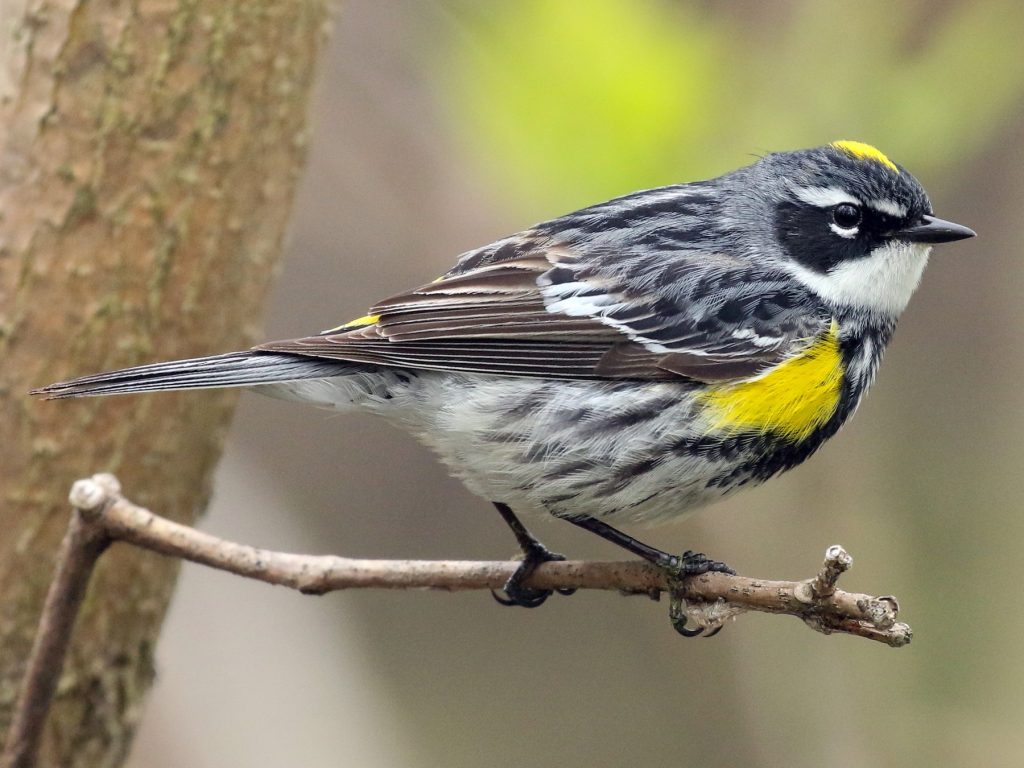
Yellow-throated Warblers are observed in Pennsylvania during the breeding season from April to August, with sightings recorded in up to 3% of summer checklists. These medium-sized warblers have yellow underparts, grayish-blue upperparts, and a vibrant yellow throat and face.
Yellow-throated Warblers breed in southeastern US states and parts of the Midwest before migrating to Mexico and Central America for the winter. They can be found in mature forests, particularly near water sources.
These warblers primarily feed on insects, including beetles, caterpillars, and spiders. To attract Yellow-throated Warblers, provide mature trees, water features, and maintain a healthy insect population.
22. Prothonotary Warbler
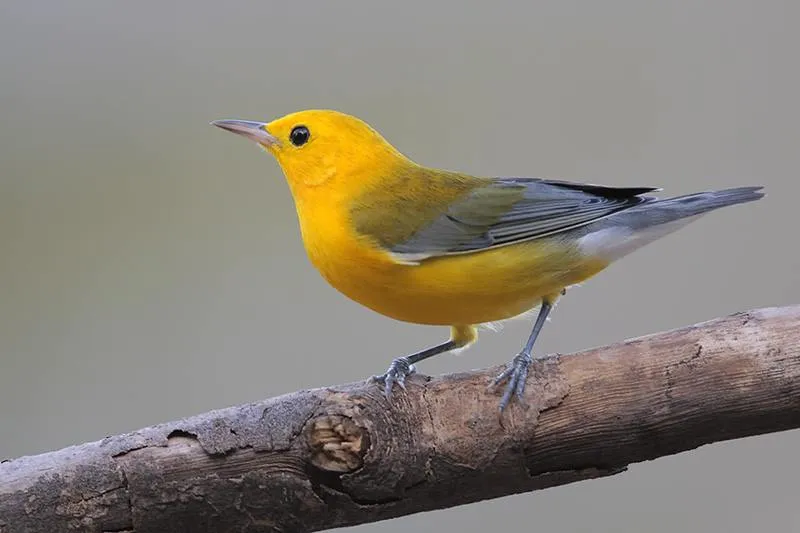
Prothonotary Warblers can be observed in Pennsylvania during the breeding season from April to August, with sightings recorded in up to 3% of summer checklists. These small warblers have bright yellow underparts, olive-green upperparts, and a distinctive orange-yellow head.
Prothonotary Warblers breed in eastern US states and parts of Canada before migrating to Central America for the winter. They prefer swampy areas, wetlands, and forested swamps with standing water.
These warblers primarily feed on insects and spiders. To attract Prothonotary Warblers, provide suitable wetland habitat with nesting boxes near water sources.
23. Dickcissel

Dickcissels can be spotted in Pennsylvania during the breeding season from May to September, with sightings recorded in up to 3% of summer checklists. These small grassland birds have a yellow breast with a black V-shaped bib, brown upperparts, and a distinctively shaped bill.
Dickcissels breed in the Midwest and Great Plains of the US before migrating to Mexico and Central America for the winter. They inhabit grasslands, meadows, and agricultural fields.
These birds primarily feed on seeds, grasshoppers, and other insects. To attract Dickcissels, create open grassy areas with native wildflowers and avoid excessive pesticide use.
24. Summer Tanager

Summer Tanagers can be observed in Pennsylvania during the breeding season from May to September, with sightings recorded in up to 4% of summer checklists. These medium-sized songbirds have bright red plumage, with males being entirely red and females having a yellowish underside.
Summer Tanagers breed in southeastern US states and parts of the Midwest before migrating to Mexico and Central America for the winter. They inhabit open woodlands, forest edges, and parks.
These tanagers primarily feed on insects, including bees, wasps, and beetles. To attract Summer Tanagers, provide suitable habitat with a mix of open areas and trees for perching.
25. Evening Grosbeak
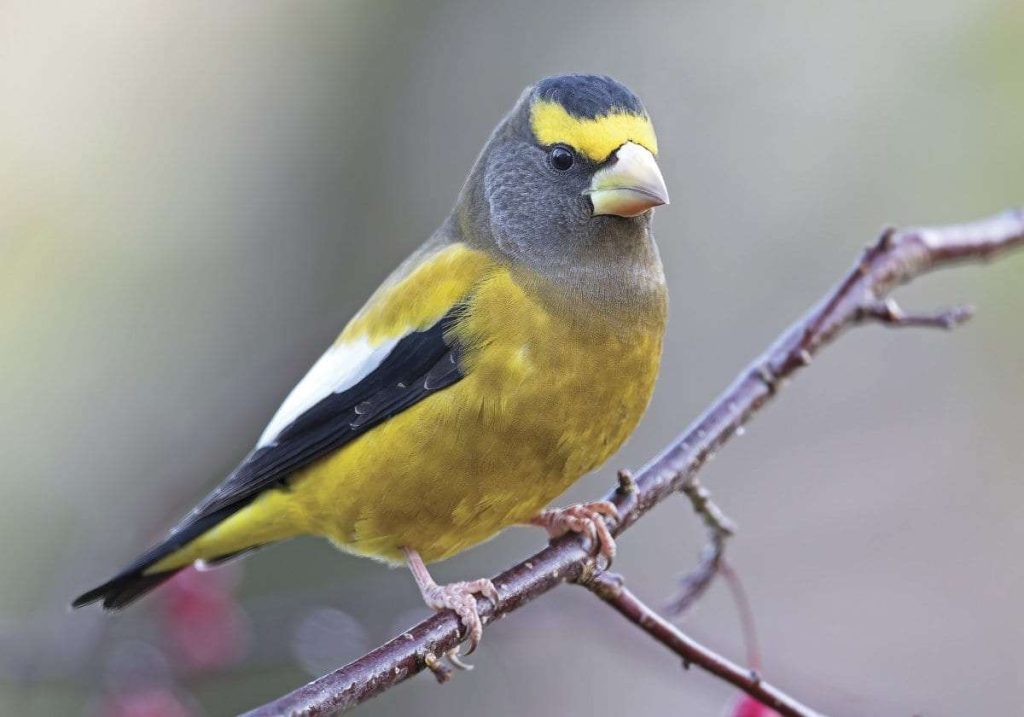
Evening Grosbeaks can be spotted in Pennsylvania during migration, with sightings recorded from April to May and from October to November. These large, stocky finches have a distinctive plumage with yellow bodies, black wings, and a large, pale bill.
Evening Grosbeaks breed in coniferous forests of Canada and parts of the western US before migrating southward. They can be found in various habitats during migration, including woodlands, parks, and backyard feeding stations.
These finches primarily feed on seeds, fruits, and buds. To attract Evening Grosbeaks during migration, provide a variety of seeds, especially sunflower seeds, and maintain a clean and accessible feeding area.
26. Orange-crowned Warbler
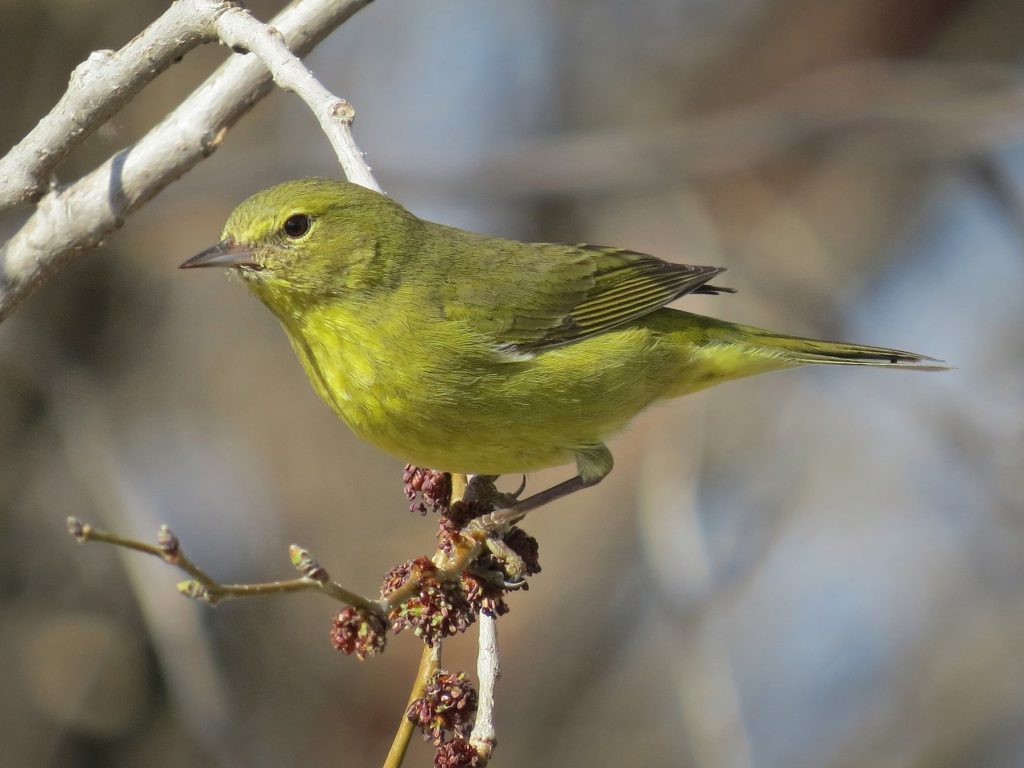
Orange-crowned Warblers can be observed in Pennsylvania during migration, with sightings recorded from April to May and from September to October. These small warblers have olive-green upperparts, pale yellow underparts, and a subtle orange crown patch that is often hidden.
Orange-crowned Warblers breed in western North America and parts of Canada before migrating southward. They can be found in various habitats during migration, including woodlands, parks, and shrubby areas.
These warblers primarily feed on insects, spiders, and berries. To attract Orange-crowned Warblers during migration, provide diverse vegetation with a mix of trees and shrubs that offer food sources and cover.
27. Palm Warbler

Palm Warblers can be observed in Pennsylvania during migration, with sightings recorded from April to May and from September to October. These small warblers have a rusty-red patch on the top of their heads, olive-brown upperparts, and a yellow undertail.
Palm Warblers breed in the boreal forests of Canada before migrating to the southeastern US and the Caribbean for the winter. They can be found in various habitats during migration, including open fields, parks, and woodland edges.
These warblers primarily feed on insects and spiders, as well as berries and seeds. To attract Palm Warblers during migration, provide low-growing vegetation, brush piles, and water sources.
28. Rusty Blackbird
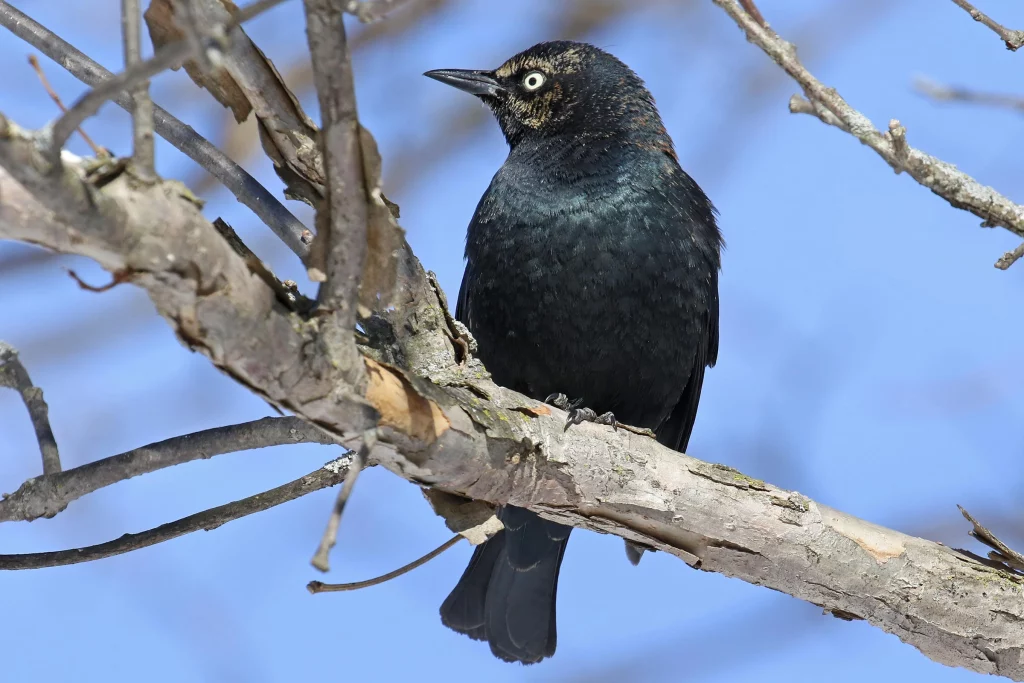
Rusty Blackbirds can be spotted in Pennsylvania during migration, with sightings recorded from February to April and from October to November. These medium-sized blackbirds have a glossy black plumage with rusty edges on their feathers. Rusty Blackbirds breed in the boreal forests of Canada and Alaska before migrating southward.
They can be found in various habitats during migration, including wetlands, swamps, and wooded areas. These blackbirds primarily feed on insects, aquatic invertebrates, and seeds.
To attract Rusty Blackbirds during migration, provide wetland areas with dense vegetation and offer a mix of insects, fruits, and seeds.
29. Snowy Owl
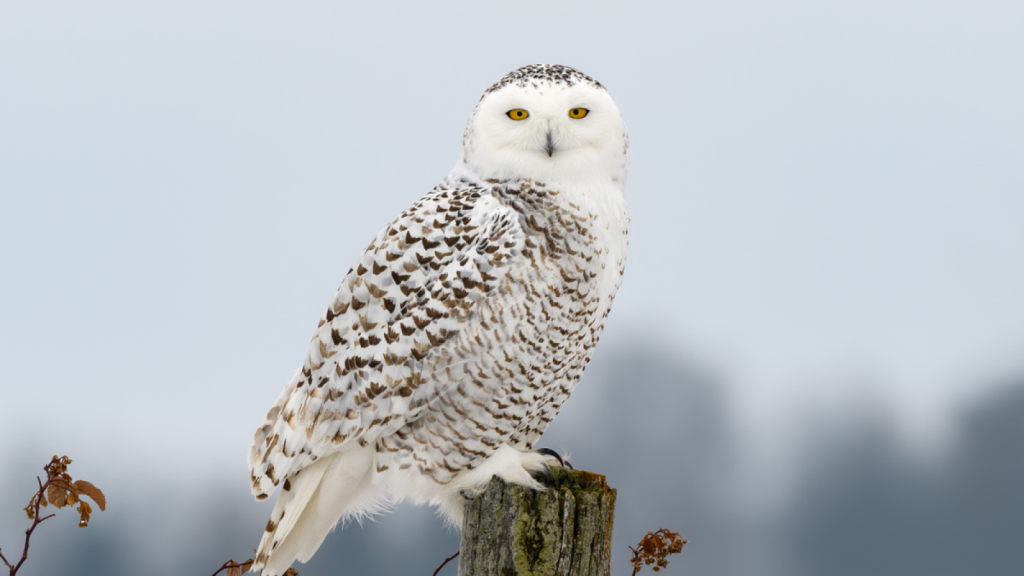
Snowy Owls can be observed in Pennsylvania during the winter months, with sightings recorded from December to February. These large owls have a distinctive white plumage with varying amounts of black barring and yellow eyes.
Snowy Owls breed in the Arctic tundra of Canada and Alaska before migrating southward during irruptions. They can be found in various open habitats during winter, including coastal areas, grasslands, and airports.
These owls primarily feed on small mammals, particularly lemmings, but also hunt birds and rabbits. To spot Snowy Owls, scan open fields and areas with suitable perches, such as fence posts or elevated structures.
Please note that the presence and frequency of bird species can vary from year to year and may depend on factors such as habitat changes, climate conditions, and migration patterns.
